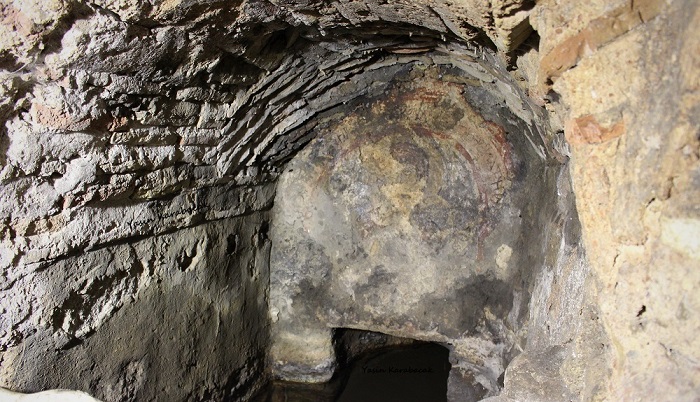
A hidden Byzantine church and a holy spring were recently discovered at an excavation site in the Sultanahmet District of Istanbul.
The site is located on Amiral Tadfil Street in the very heart of the ancient city of Constantinople beneath a building belonging to a former tourist agency known as “Kirkit Voyage.” There were excavations from the Istanbul Archaeological Museum from 1997 to 1998.
The treasures found there include a beautiful mosaic floor and a small subterranean chamber with a niche with both split apart into two different sectors—one on top of the other.
The upper section, which is underground, contains the mosaic floor, as well as the ruins of an unknown structure. The site is estimated to date back to the 5th or 6th century, and was very likely located near the vicinity of the Great Palace of Constantinople.
Byzantine church decorated with marble slab
A vaulted chamber that is also present appears to date back to the 11th or 12th century, according to archaeologists.
The second level underneath contains a niche of a former Byzantine church, decorated with a marble slab with a small pool of water. A lunette above the area is adorned with a fresco depicting the Theotokos holding the Christ Child.
The researchers suggest that the holy spring, or “hagiasma,” belonged at one time to the Hodegon Monastery. This theory, however, remains unlikely, as the monastery is too far east.
The site can be accessed either through the Kirkit Voyage tourist agency on Amiral Tadfil Street or Sedir Carpet & Kilim on Mimar Mehmet Ağa Street in Sultanahmet.
Important sites including the Byzantine Cathedral of Hagia Sophia and various other notable monuments are in what is now known as the Sultanahmet District, located in the heart of Constantinople.
The great city was called Constantinople by the entire wider world until the 20th century. Although the Ottomans had unofficially called it Istanbul for years, the official name change took place in 1930 after the establishment of the modern Turkish Republic.
Initially settled in the seventh century BC, the city developed into a thriving port thanks to its prime geographic location between Europe and Asia, as well as its natural harbor. In 330 AD, it became the site of Roman Emperor Constantine’s “New Rome,” soon developing into a wealthy city with magnificent Christian architecture.
Constantinople stood as the seat of the Byzantine Empire for the next 1,100 years, enjoying great prosperity though plagued by a series of deadly sieges over the years until it was conquered by Sultan Mehmed II of the Ottoman Empire.
This newest discovery evidences the fact that Istanbul continues to possess a wealth of Greek history awaiting to be discovered.
Related: May 29, 1453: The Day Constantinople Fell
See all the latest news from Greece and the world at Greekreporter.com. Contact our newsroom to report an update or send your story, photos and videos. Follow GR on Google News and subscribe here to our daily email!



